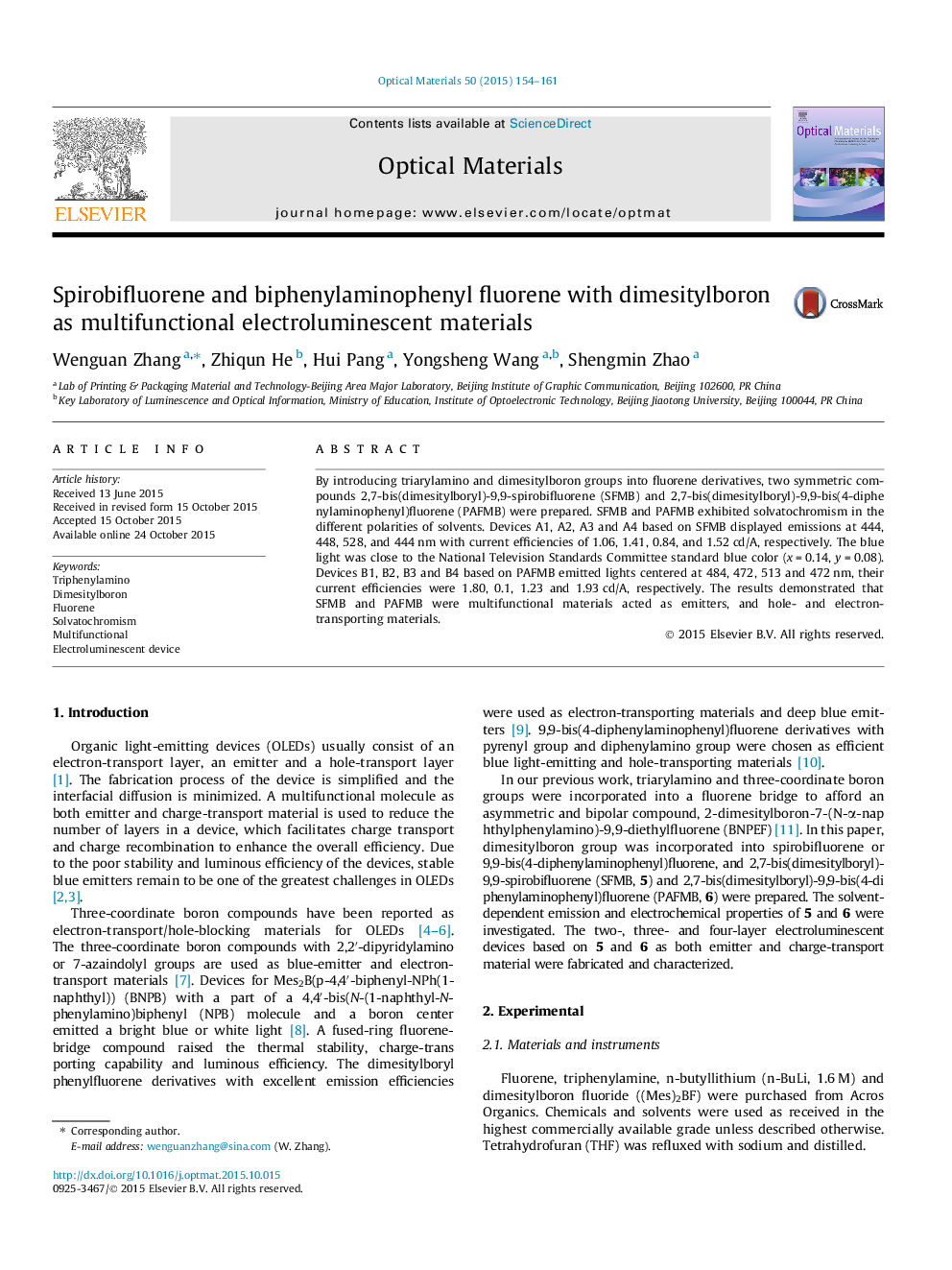| Article ID | Journal | Published Year | Pages | File Type |
|---|---|---|---|---|
| 1493442 | Optical Materials | 2015 | 8 Pages |
•2,7-Bis(dimesitylboryl)-9,9-spirobifluorene (5) as an emitter and electron transport.•Multifunctional 2,7-bis(dimesitylboryl)-9,9-bis(4-diphenylaminophenyl)fluorene (6).•5 and 6 exhibited solvatochromism in the different polarities of solvents.•Device A based on 5 emitted a deep blue light at 444 nm with maximum LE of 1.52 cd/A.•Device B based on 6 showed a blue emission at 472 nm with maximum LE of 1.93 cd/A.
By introducing triarylamino and dimesitylboron groups into fluorene derivatives, two symmetric compounds 2,7-bis(dimesitylboryl)-9,9-spirobifluorene (SFMB) and 2,7-bis(dimesitylboryl)-9,9-bis(4-diphenylaminophenyl)fluorene (PAFMB) were prepared. SFMB and PAFMB exhibited solvatochromism in the different polarities of solvents. Devices A1, A2, A3 and A4 based on SFMB displayed emissions at 444, 448, 528, and 444 nm with current efficiencies of 1.06, 1.41, 0.84, and 1.52 cd/A, respectively. The blue light was close to the National Television Standards Committee standard blue color (x = 0.14, y = 0.08). Devices B1, B2, B3 and B4 based on PAFMB emitted lights centered at 484, 472, 513 and 472 nm, their current efficiencies were 1.80, 0.1, 1.23 and 1.93 cd/A, respectively. The results demonstrated that SFMB and PAFMB were multifunctional materials acted as emitters, and hole- and electron-transporting materials.
